CTRL+K
CTRL+K
Nestled just 60 kilometers south of Agadir, the Souss-Massa National Park offers an extraordinary adventure across continents, where you can encounter a captivating array of fascinating species. One of the highlights of this exceptional park is the opportunity to witness the graceful dama gazelle, a truly elegant creature with its slender form and striking features. Alongside these majestic antelopes, you’ll also have the chance to marvel at the equally graceful oryx gazelle, renowned for its distinctive elongated horns and regal bearing. But the natural wonders don’t stop there – keep your eyes peeled for the endearing dorcas gazelle, a petite and charming species that will undoubtedly steal your heart.
The Souss-Massa region boasts a fairly diverse mammalian fauna distributed across various habitats and territories. It is stretching along the coastal fringe for 65 km between Agadir and Tiznit, represents a national heritage in itself, showcasing a considerable biological and ecological diversity; it is home to over 30 species of mammals.
The wild hare belongs to the Leporidae family, separate from rabbits. Its fur color is reddish, different from rabbits. Its ears are very long, longer than its head. The ears are thin and light. Hares have powerful hind legs for fast running when needed. Around thirty hare species exist worldwide. Their size, color, and lifestyle differs. Hares are usually alone, sometimes in pairs. Adult hares weigh between 3 to 5 kilograms.
The addax is an antelope in the Bovidae family. It is native to Africa and almost extinct in the wild. At one time, it lived in various areas of the Sahara desert. This antelope species was introduced to the Souss Massa National Park. The goal was to help it adapt before reintroducing it to its original habitat in southern Morocco. The addax has a yellowish-white coat with a black spot on its forehead and a brown mane. Both male and female addaxes have spiral, ringed horns and large hooves. These hooves help them walk on sand. The addax is well-suited for desert living. It eats leaves and wild melons. This allows it to go for long periods without drinking water.
The ostrich is the world’s biggest bird, unable to fly but excellent at running. It can move incredibly fast over land, reaching up to 70 km/h. In the 1970s, wild ostriches lived in Morocco’s Oued Eddahab region. Recently, a program brought North African ostriches back to Morocco. It involved capturing around thirty ostriches from Chad. They were moved to Souss-Massa National Park in Agadir’s southern region in June 1996 to get used to the area. Since then, the ostrich population has grown to over 150, becoming the Sahelo-Saharan region’s largest semi-captive group.
The Egyptian mongoose (Herpestes ichneumon),also known as the ichneumon, is a species of small carnivorous mammal that has long been admired by humans for its legendary battles against venomous snakes, earning it the title of ‘snake killer’. With an elongated body and head, the Egyptian mongoose has a pointed snout, a bushy tail, and very small ears that are almost completely hidden under its grayish fur. Inhabiting deserts, coastal areas, and marshes, this animal also thrives in the Souss-Massa National Park as well as throughout the provinces of the southern region.
The red fox is a furry mammal characterized by Its pointy face and ears. Also by its glossy fur and a bushy tail. Males are a bit bigger than females. Although stories say red foxes are bold, clever, and tricky, they are really timid, quiet, and anxious animals. Red foxes usually eat small rodents like voles, mice, lemmings, squirrels, rabbits, and hares. However, they eat various other foods including plants. In Morocco, red foxes are very active at night. They live in different regions, especially the Atlas Mountains. The Souss Massa National Park documents red foxes as one of its mammals.
The Barbary sheep (Ammotragus lervia), known as “oudad” in the Amazigh language, is a native species to the pre-desert mountains of the Atlas Mountains in North Africa and the rocky regions of the Sahara. It is a herbivorous mammal that can reach lengths of up to 1.65m and heights of 1.10m, with pale fawn-colored fur, and whitish undersides and inner legs. A mane of longer hair runs along its spine, back, and underside of the neck, forming a sort of fringe. In appearance, this bovid resembles an intermediary between a sheep and a goat, with a sturdy and robust build, short legs, and a relatively long face.
The jackal refers to several smaller canine species native to Asia and Africa. Its tawny coat is speckled with gray, and this carnivore measures around 2-3 feet long. Although fox-like in appearance, jackals share traits with wolves. They inhabit open grasslands and scrubby areas, often lurking near herds for hunting opportunities. Despite some local dislike, jackals adapt well across regions and cooperate with other African predators. Their diet consists mainly of small prey like frogs, birds, rodents, smaller mammals, and insects.
The vast Atlantic stretches provide a nurturing environment for diverse aquatic mammals. Many fortunate observers have witnessed playful otters, graceful dolphins like the blue and Risso’s varieties, and awe-inspiring whales such as the rorqual and common porpoise. However, the ocean depths conceal additional fascinating creatures. The viperine snake, leopard snake, and horseshoe snake slither through these realms. Majestic loggerhead and leatherback turtles also call the Atlantic their home.
The orca (Orcinus orca), commonly called the killer whale, dominates the ocean’s food chain as an apex predator. This magnificent cetacean displays remarkable traits – sensitive, intelligent, and deeply bonded with its pod. Its distinctive appearance features a black dorsal region, a white ventral area, and a white patch above and behind each eye. The orca’s body is muscular and streamlined, crowned by a prominent dorsal fin. Adult males can reach formidable sizes, stretching up to 9 meters and weighing an impressive 8 to 9 tonnes. Notably, orca pods frequently traverse the Atlantic Ocean, both north and south of Agadir. Migrating from the southern regions, they relish the calm, waveless waters surrounding this area.
The short-beaked common dolphin is a species belonging to toothed whales. It averages between 5.9 and 8.5 feet long, weighing 165 to 254 pounds. Excellent eyesight aids this mammal, complemented by echolocation to produce clicking noises and whistles. Its powerful tail propels it through water at remarkable speeds, up to 50 km/h. Typically inhabiting offshore regions, it can venture near shorelines. Found in tropical, subtropical, and warm temperate Atlantic and Pacific waters, including the Mediterranean and Black Seas. Frequently, it delights onlookers by gracefully accompanying vessels near coastlines.
The Souss-Massa region attracts nature lovers, especially bird watchers, from around the world. It is home to 350 bird species. Some visitors go on difficult trips to see these birds up close. Certain birds are sought after by hunters too. The red-legged partridge, rock pigeon, stock dove, wood pigeon, turtledove, and common quail are some of the game birds found here.
The Moussier’s redstart (Phoenicurus moussieri) is a sturdy small bird with a relatively larger head and shorter tail compared to other redstarts. The adult male is unmistakable: it has a rusty underside and rump. The rest of the upper parts are black. However, its most remarkable distinguishing feature is a broad white eyebrow that extends from the top of the forehead backward, above the eyes, and far down the sides of the neck. A prominent white patch is clearly visible on the wing.
The mallard duck, also called the wild duck, is a bird found in many parts of the world. It lives peacefully near rivers, bays, lakes, and small freshwater streams, like those in the Souss-Massa National Park. The male mallard has a striking appearance, with a bright green head and neck, a white collar, a yellow bill, a rich brown breast, and pale gray sides and belly. This distinctive look makes the mallard duck easily recognizable.
The white stork is a tall, migratory wading bird. Standing between 90 and 110 cm, this species can weigh up to 4 kg. When winter arrives, it migrates to warmer regions like Morocco, often seen in Souss-Massa National Park. In the air, its elongated neck, legs extending past its tail, and disorderly circular flight patterns distinguish it from the white pelican, despite their similar coloring. Unlike pelicans’ synchronized movements, white storks exhibit an irregular, circling motion while airborne.
Flamingos gather in massive groups, sometimes hundreds strong. They are iconic residents of the Souss Massa region, found primarily in Souss-Massa National Park, along the banks and estuaries of the Massa and Souss rivers. This bird is a true natural wonder, with a distinct shape and color unmatched on the continent: the sole flamingo species (family Phoenicopteridae) without mistaking it for another. At rest, the flamingo displays a fully light pink body, lengthy pink webbed feet, and a short, curved beak with a black tip. Due to their size, flamingos require several meters of runway to take off from water. They fly erratically in formation, necks and legs outstretched. Powerful, regular wingbeats propel them at speeds up to 60 km/h over journeys spanning hundreds of kilometers.
The Northern Bald Ibis, dubbed one of the planet’s 100 most endangered species, is an ancient bird that has witnessed a steep population decline over time, leaving only a few hundred individuals left on Earth. In Morocco, this species still exists, particularly along the Souss Massa region’s coastline. With a height ranging from 70 to 80 cm and a weight of 1 kg, or even 1.5 kg for larger individuals, it thrives in small colonies in wetlands on rocky, semi-arid cliffs and coastal cliffs. Its plumage is iridescent black with blue, green, or purplish hues. The bird sports a bald head and neck, exposing cherry-red skin, while the back of its head is slate-gray. Its long, slender, curved bill and legs are bright red.
The Grey Heron, scientifically known as Ardea cinerea, is a magnificent avian species that typically stands tall at 95 centimeters and boasts an impressive wingspan of 1.85 meters. Its weight ranges from 1.5 to 2 kilograms. This stately bird is distinguished by its elongated neck and a sizable, dagger-shaped yellow bill. Easily identifiable by its yellow legs and predominantly gray feathers, with the exception of its snowy white head and underparts. This avian resident of the Souss-Massa National Park also sports a striking black crest atop its head, extending down its back. When at rest, the Grey Heron assumes a particularly distinctive, motionless stance; it can remain perched on one leg for extended periods, with its neck neatly tucked between its shoulders.
Swallows make up the Hirundinidae family, a relatively small group of avian species numbering around 87 worldwide. Many species in this family live together in colonies and construct their nests within cavities, laying clutches of four to six eggs. Swallows exhibit graceful flight patterns. At the end of summer, they congregate on wires along roadsides, with multiple species often observed together in these gatherings. The village of Tamri, located 60km north of Agadir, is a notable site in the Souss Massa region where these birds can be observed and appreciated.
The Laridae family includes seabirds called gulls, recognizable by their white and gray feathers and distinct calls. The black-headed gull species is abundant along coastal regions, such as the Souss Massa area.
Slender-billed gulls belong to the Laridae family (Chroicocephalus genei). These water birds have elongated wings. Adults differ from other gulls through certain distinct features like a white patch on the rear of their wings, a thick and dark red bill, and a slightly orange tint on their chest and belly. The purity of their lines and simplicity of colors accentuate the subtle pink hue on their chest, often barely noticeable. Similar to related species, Slender-billed gulls gracefully soar through the skies above the village of Tamri, situated 60km north of Agadir.
The Audouin’s gull (Ichthyaetus audouinii) belongs to the Laridae family of birds. It forms colonies and relies heavily on marine food sources. This species resides near coastal areas like Tamri, located 60km north of Agadir. The Audouin’s gull is highly sensitive to disruptions, particularly during nesting and nest-building phases. Any human presence on the islands where they breed can seriously impact their reproductive success and survival prospects. Another major threat faced by these gulls is the predation of their young by Yellow-legged gulls.
The White Stork (Ciconia ciconia), a tall and graceful wading bird, belongs to the Ciconiidae family. Its elegant white feathers contrast beautifully with black wings. Long red legs and a straight red bill add to its striking appearance. On average, these birds measure between 100 to 115 cm in length, with a wingspan ranging from 155 to 215 cm. Their impressive lifespan spans 20 to 30 years. As migratory creatures, they seek warm climates during winter months. Morocco is a popular destination, particularly the serene Souss-Massa National Park. In flight, their extended necks and legs protruding beyond the tail distinguish them from White Pelicans. Additionally, their erratic circling pattern differs from the synchronized flight of pelicans.
The Golden Eagle (Aquila chrysaetos) is a predatory bird of prey, considered a natural gem in Morocco, protected from hunting, disturbance, or domestication under international laws. This elusive creature guards territories up to 155 km², using agility, swiftness, and robust talons to seize prey. Monogamous pairs often remain together for years or life. Measuring 66 to 100 cm long, with wingspans typically 1.8 to 2.34 m, males weigh around 4.05 kg while females average 6.35 kg. Distinct features include uniformly dark brown upperparts, except lighter crown, nape, and median coverts with buff-tipped feathers. Gray primaries have darker inner webs. The tail has a gray base with brown bars and a dark terminal band. Broad, rectangular wings and a relatively long, wide tail with a rounded tip complete its appearance.
The Bonelli’s Eagle (Aquila fasciata), a medium-sized raptor, displays a distinct characteristic as it matures – a striking white patch on its back. The juvenile birds exhibit a reddish hue, gradually transforming into adult plumage over a span of 3 to 4 years. This formidable eagle boasts an impressive wingspan ranging from 150 to 170 centimeters. In their natural habitat, these majestic creatures can live up to 30 years, with a weight ranging between 1.5 and 2 kilograms.
The Peregrine Falcon (Falco peregrinus) is a diurnal bird of prey from a smaller to medium-sized family. When perched, it seems compact and broader across the shoulders than the Common Buzzard, appearing less bulky. The female has a large wood pigeon’s build, while the male, one-third smaller (hence “tiercel”), is domestic pigeon-sized. During breeding season, both mates perform aerial displays: chases, steep dives, and looping maneuvers, quite spectacular. When diving steeply from high altitudes, its speed can surpass 350 km/h.
The Lanner Falcon (Falco biarmicus) belongs to the Falconidae family. It is a fairly large bird with a slim, streamlined shape. Its colors differ between subspecies and individuals, but typically the upperparts are slate-gray or brownish-gray with dark bars, while the underparts have fine spots, except for older males that may have plain white underparts. This falcon is widely but patchily distributed across Morocco, favoring southern regions. The Lanner hunts in pairs using a cooperative technique. The female flushes out prey, and the male swoops in to seize it.
The Green Sea Turtle (Chelonia mydas) is a marine creature facing global threats, often entangled in fishing nets by chance or intentionally. This turtle species inhabits tropical oceans worldwide, with notable presence along Morocco’s southern coast and in Mauritania. As the largest turtle in the Cheloniidae family, it typically measures 1.10 m in shell length and weighs between 80 and 130 kg. However, some Green Sea Turtles can reach impressive sizes, weighing up to 300 kg with shells spanning 1.5 m. In their early life stages, these turtles are carnivorous to promote rapid growth, consuming small invertebrates and fish eggs. As adults, they primarily graze on algae from seagrass beds, but they may also consume jellyfish, crustaceans, mollusks, and other aquatic life found in vegetation.
The viperine snake (Natrix maura) is a type of water snake found in warm, humid areas. It is sometimes mistaken for a viper snake due to its size, colors, and how it coils and flattens its head when threatened, but it is not venomous. The larger females of this snake species can grow up to 1 meter long. They have a grayish-green color with dark spots or zigzag stripes, while their underside is yellowish-white with dark spots. These snakes mainly eat small fish and amphibians. Younger viperine snakes hunt for fish fry or tadpoles.
The crested porcupine (Hystrix cristata) ranks as the world’s third-largest rodent, surpassed only by capybara and beaver. Its body bears around 30,000 stiff quills across head, neck, rump, and tail, protruding from a coat of underfur and guard hairs. Despite being well-camouflaged in dens or trees, this porcupine’s loud feeding habits can reveal its presence. Noisy chewing, snapping twigs, and stripped bark often betray its location. During summer months, the crested porcupine forages on leaves, buds, aquatic plants like water lilies and arrowheads, terrestrial vegetation such as grasses and raspberry bushes, and nuts including acorns and beech mast. Its presence frequently gets recorded in the Souss Massa National Park.
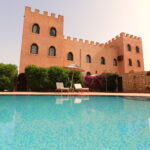
There are no results matching your search.
Reset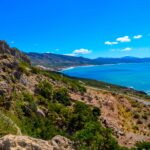
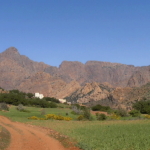
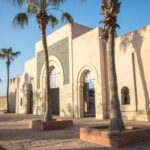
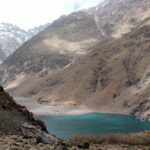

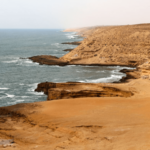

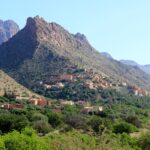
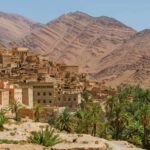

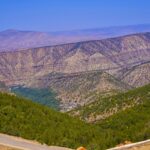

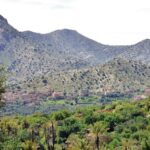
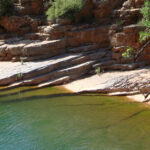
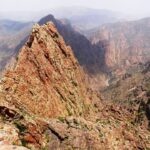
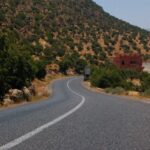
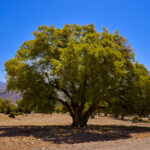
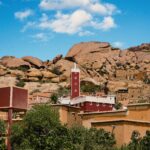


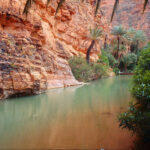

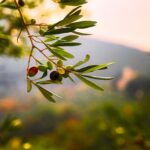
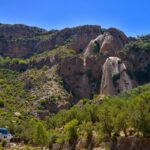
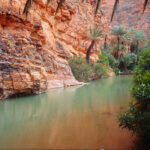
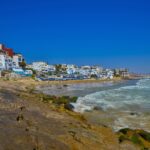
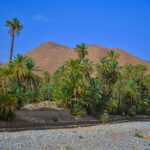
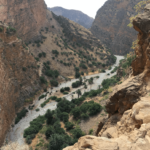
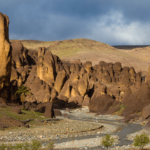


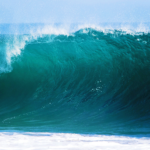
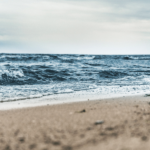

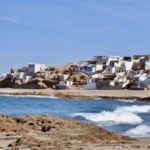

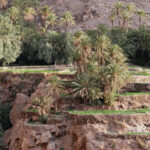



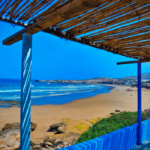


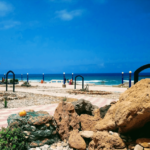
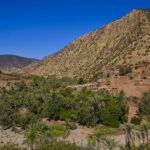
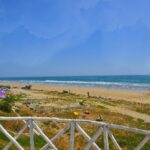
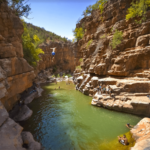


There are no results matching your search.
Reset